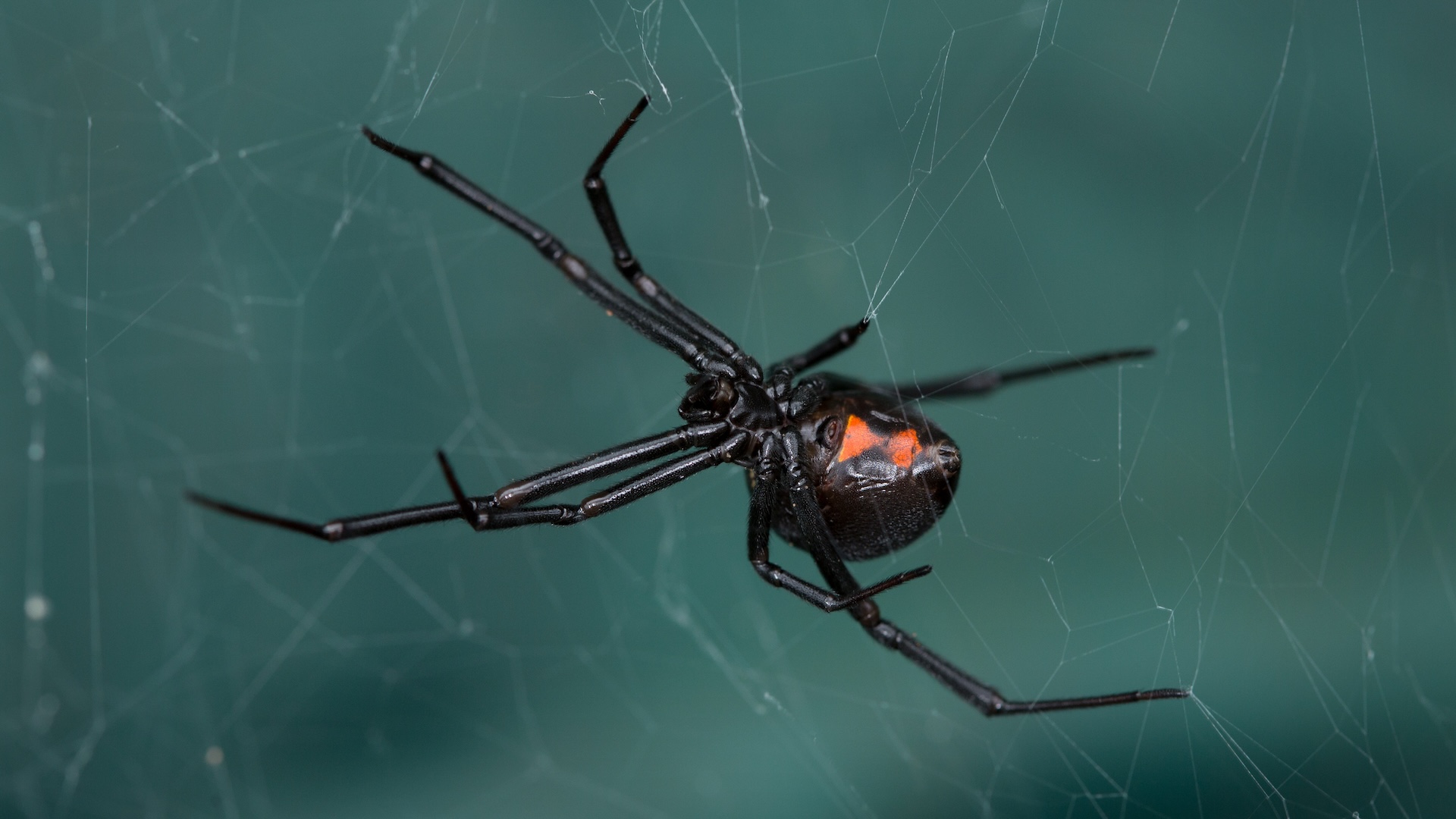Diagnostic dilemma: Black widow spider's venom poisoned a woman through her eyeball
A woman went to the emergency room after getting bits of a venomous spider in her eye.

The patient: A 37-year-old woman in California
The symptoms: The woman visited the emergency room because the upper and lower eyelids of her left eye were swollen and felt like they were burning. Her conjunctiva — a thin protective membrane that covers the whites of the eye and inner surface of the eyelids — was also swollen.
What happened next: Shortly after the woman arrived at the hospital, her symptoms intensified. Her eye continued to swell until it was almost entirely shut. Within 10 to 20 minutes of being admitted, she developed neck pain and nausea, followed by cramps in her abdomen, thighs and calves. After two hours, her extremities began tingling.
The diagnosis: The woman told her doctors that about 20 minutes before her emergency room visit, she and her husband had spotted a large, black spider inside a shed. Her husband declared that it was a venomous western black widow (Latrodectus hesperus) and struck it with a hammer, "which splattered the spider in all directions," her physicians wrote in a report of the case.
The violent squishing rendered the arachnid impossible to conclusively identify. As the spider was crushed, a fragment of the arachnid flew into the woman's eye, she said, which caused immediate pain and swelling.
The doctors concluded that the woman's symptoms were caused by accidental exposure to black widow venom, enough of which was absorbed through her eye tissue to enter her bloodstream and reach other parts of her body. A compound in the venom called alpha-latrotoxin affects vertebrates, and it primarily targets the central nervous system, which includes the brain and spinal cord.
Symptoms triggered by the venom can be severe and last several days, and in rare cases, they can trigger long-term pain or severe allergic reactions. However, in most cases, exposure to the venom isn't deadly. In a 2023 survey evaluating over 23,000 cases of people bitten by black widow spiders, just 1.4% experienced life-threatening symptoms.
Get the world’s most fascinating discoveries delivered straight to your inbox.
The treatment: Doctors injected the woman with 50 milligrams of Benadryl, an antihistamine that helps reduce inflammatory responses, which greatly reduced the swelling in her eye. For her other symptoms, the physicians recommended an intravenous dose of calcium gluconate, a common treatment for black widow bites.
However, the patient declined this treatment, saying she could manage the discomfort without additional intervention. Three hours after her spider encounter, the woman was discharged from the hospital with eye drops containing the steroid hydrocortisone, to further reduce swelling, as well as the antibiotic neomycin to help prevent bacterial infection. The doctors told her to return to the hospital if her symptoms came back.
During a follow-up visit more than a week later, the patient said the swelling was gone by about 48 hours after she left the hospital but her eye remained red for about five days. For about 72 hours after discharge, she continued to experience cramps in her belly, legs and neck. Nausea and a general feeling of shakiness persisted for about seven days.
What makes the case unique: Most people who are sickened by black widow venom are exposed to the toxins through bites, with about 2,600 bites from Latrodectus species reported to the National Poison Data System each year. (The genus Latrodectus includes more than 30 species, including black widows as well as some of their less-dangerous cousins, like brown widows.)
It's possible that the spider fragment that landed in the woman's eye and poisoned her did not include the arachnid's venom gland, according to the case report. However, research dating to 1888 has found that other soft body parts of black widow spiders could still poison a horse when injected into the animal. And a 1971 study found that black widow eggs and the bodies of their hatchlings are also highly toxic.
"Contact with the black widow spider or any of its body parts is potentially hazardous," the doctors wrote in the report. "Anyone exposed to Latrodectus venom, body parts, or eggs should be observed until his wellbeing can be assured."
In the woman's case, her relatively mild symptoms could mean that she received a fairly small dose of venom. Absorption through her eye may also have hindered the spread of the toxin through her body, according to the report.
This article is for informational purposes only and is not meant to offer medical advice.

Mindy Weisberger is a science journalist and author of "Rise of the Zombie Bugs: The Surprising Science of Parasitic Mind-Control" (Hopkins Press). She formerly edited for Scholastic and was a channel editor and senior writer for Live Science. She has reported on general science, covering climate change, paleontology, biology and space. Mindy studied film at Columbia University; prior to LS, she produced, wrote and directed media for the American Museum of Natural History in NYC. Her videos about dinosaurs, astrophysics, biodiversity and evolution appear in museums and science centers worldwide, earning awards such as the CINE Golden Eagle and the Communicator Award of Excellence. Her writing has also appeared in Scientific American, The Washington Post, How It Works Magazine and CNN.
You must confirm your public display name before commenting
Please logout and then login again, you will then be prompted to enter your display name.


